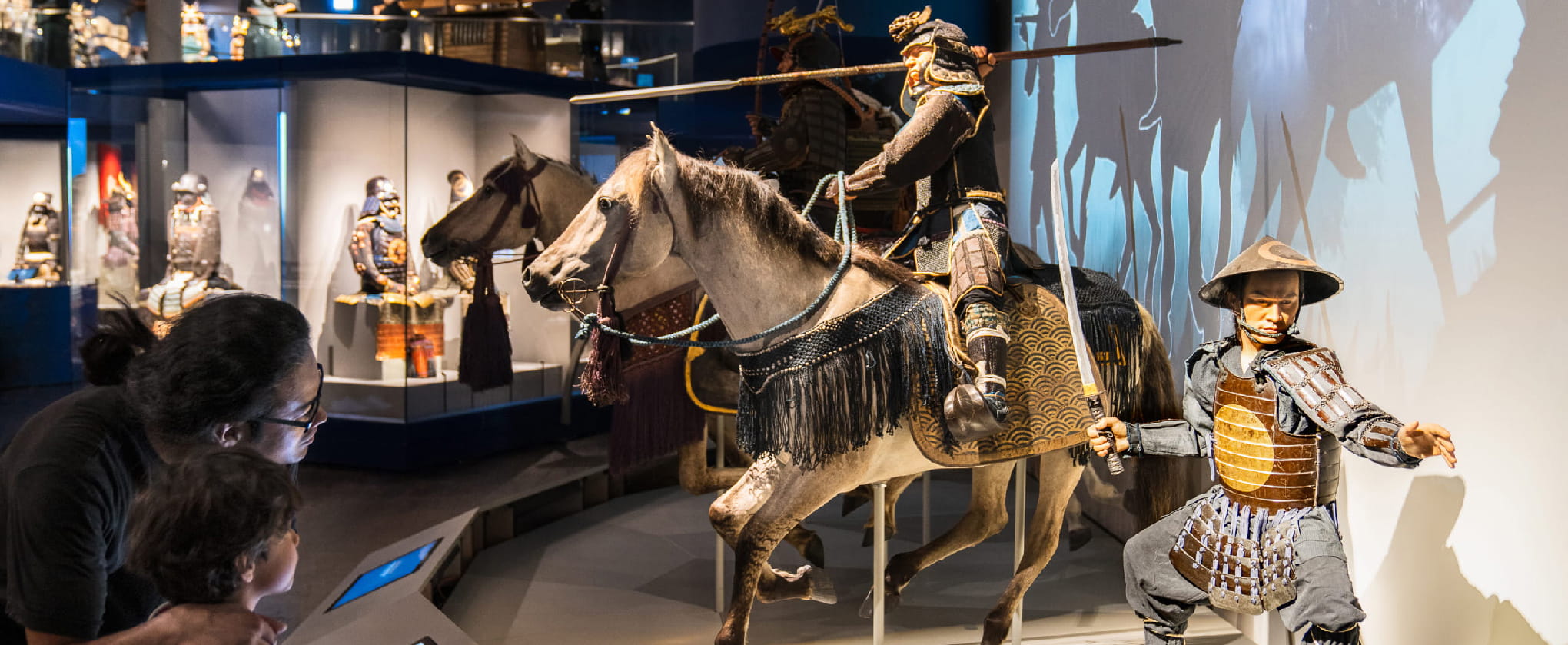In a quiet corner of bustling Berlin lies a place where time bends, transporting visitors to the austere beauty of feudal Japan. The Samurai Museum Berlin, tucked away amidst modern architecture, holds within its walls a world shaped by honor, discipline, and artistry. Among the treasures on display, there is one object that often draws visitors into its quiet gravity—a suit of samurai armor, standing tall as if its wearer might suddenly step forward.
This particular gusoku, with its lacquered plates and intricate silk lacing, is believed to have belonged to a high-ranking samurai from the Edo period. The armor’s helmet, a kabuto adorned with a fearsome crest, is a marvel of design. It features a finely crafted chrysanthemum motif, a symbol of imperial favor, painstakingly etched onto its copper-gilt surface. The shikoro, or neck guard, fans outward in tiers, each plate bound together with dark blue braid, a hue reserved for warriors of status and skill.
But it isn’t just the craftsmanship that captures the imagination—it’s the story woven into the metal and silk. This armor once stood on the battlefields of a tumultuous Japan, a witness to the rise and fall of clans and the relentless pursuit of unity under the shogunate. The samurai who wore it was not just a soldier but a symbol, embodying the bushido code of loyalty and honor. The dents and wear on the lacquer speak of more than age; they tell of battles fought and survived, of an era where life and death were a daily gamble.
The museum doesn’t stop at displaying artifacts; it breathes life into their history. A digital installation beside the armor recreates the sights and sounds of feudal Japan. The clang of swords, the rustle of silk as a samurai bows before his lord, and the distant cries of a battlefield pull visitors into the world this armor once inhabited. It’s a visceral experience, bridging the centuries with a single glance at the suit’s polished plates.
For those who linger, the museum’s curators eagerly share the lore. They recount the craftsmanship of the armorers, the Saotome school perhaps, who forged these masterpieces not just to protect but to intimidate and inspire. They speak of the meticulous process of lacquering, the layers applied and polished to perfection, each a testament to patience and skill. Every thread, every crest, every etched line carries meaning, linking the samurai to their lineage, their lord, and their gods.
This armor, like many pieces in the Samurai Museum Berlin, is more than a relic—it is a storyteller. It whispers of battles and alliances, of a time when Japan was both fragmented and fiercely unified by a shared code of honor. And as visitors stand before it, they find themselves drawn into a narrative as timeless as the samurai themselves, their reflections merging with the past in the lacquer’s polished surface.


